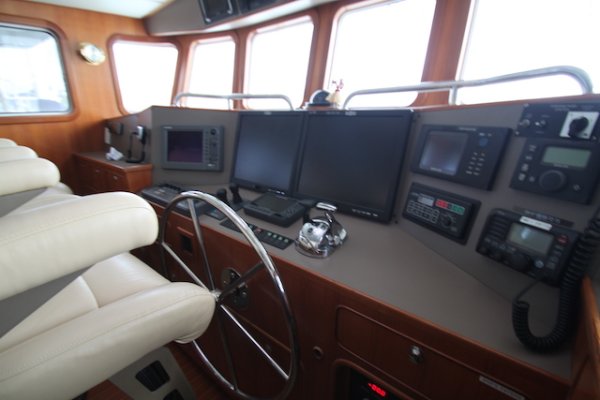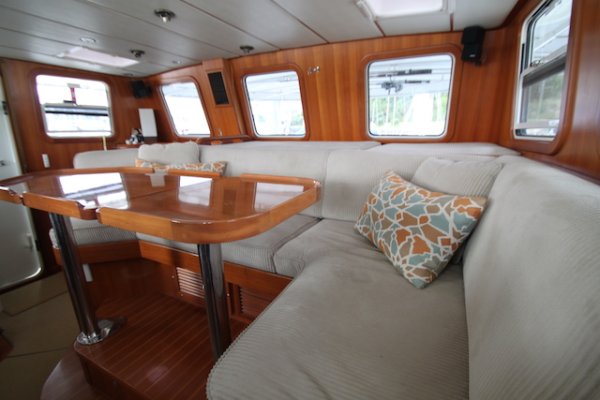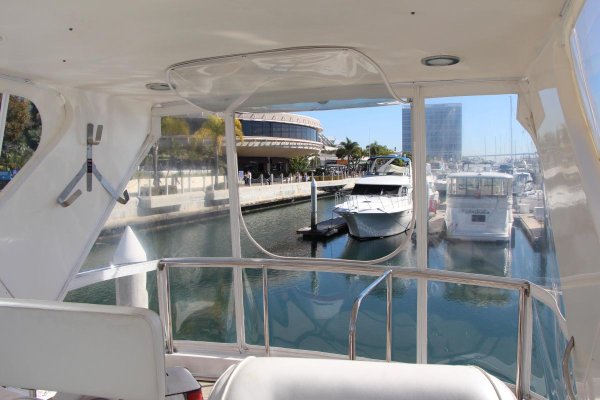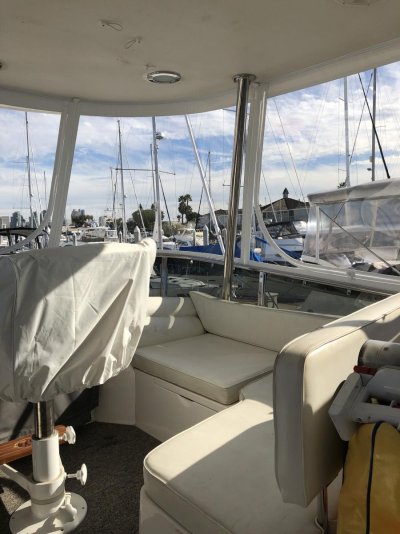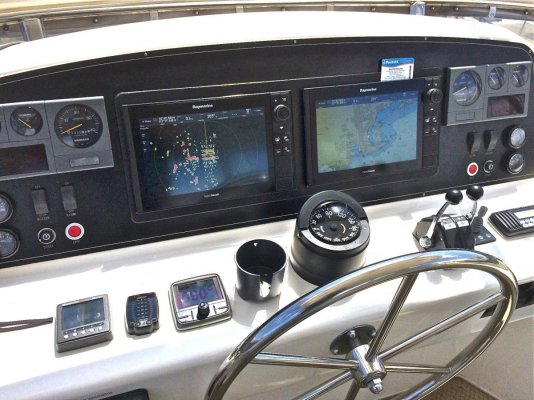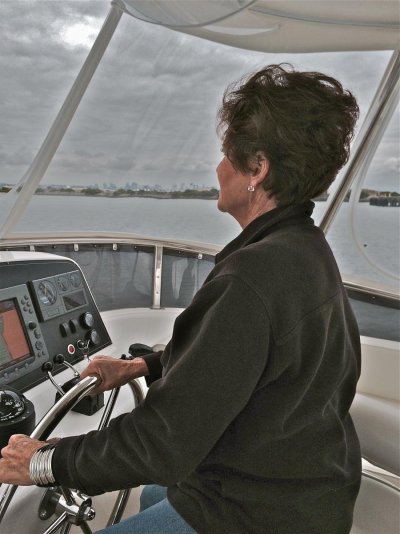The real question regarding having a PH or not seems to me to turn on what one primarily wants to do with his boat. An incorporated saloon space adds lots of extra relaxing and entertaining room, but it comes at a price. The two most expensive are: 1.) By virtue of the positioning of the helm station, when underway there is little or no forward facing seating. Most of the area surrounding the helm is given over to galley space or to wrap around built ins. Neither is conduce to sharing the cruising experience with the lone helmsman. 2.) For the same reason as above, most saloon layouts preclude exiting or entering the boat at or near the helm station. This is especially troublesome in foul weather and during docking maneuvers.
As noted elsewhere, a discreet pilothouse, preferably with port and starboard doors, provides the light restriction needed for night navigation, the access for docking and foul weather movement, and, perhaps most importantly, the cozy space for captain AND crew (or whatever dimensions) to share the forward and side looking cruising experience, even when floating on the hook.


